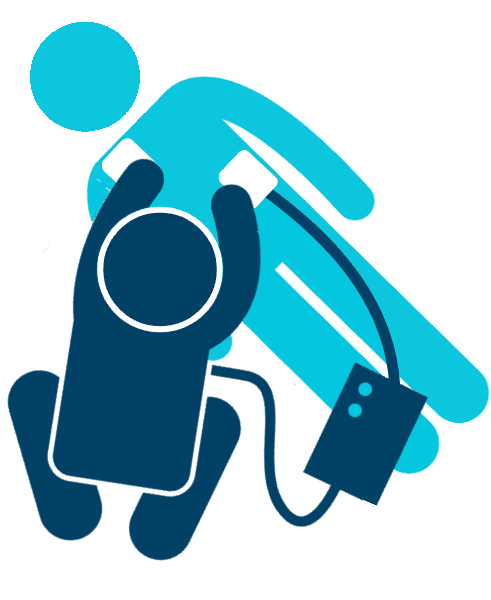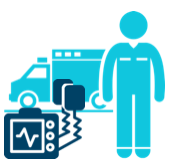Automated External Defibrillation (AED)
A defibrillator is critical is helping the survival rate of a casualty in cardiac arrest. Most public access AEDs can be found where people gather such as leisure centres, libraries, bus stations…
If you have to send a bystander to fetch an AED the easiest way to describe what they’re looking for is is a green / yellow box. It will have a heart with a lightning bolt running through it.
To get access simply dial 999 / 112 and tell them you’re dealing with a cardiac arrest. If you’ve not already requested an ambulance, this will ensure one is en route.
Once the operator gives you the access code you’ll pull out the bag containing the defibrillator to take back to the casualty.
It’s critical that you know the location of your nearest AED to your workplace or places you visit on a regular basis as this can save vital time.
What’s In The Bag?
- The defibrillator
- Pads – may contain both adult / child
- Instructions
- Gloves
- Safety scissors
- Face shield for rescue breaths
- Razor – for removing hairs from the chest area
Placement Of The Pads
 Whether using adult or paediatric pads these need to be placed directly on the casualty’s skin.1
Whether using adult or paediatric pads these need to be placed directly on the casualty’s skin.1
For children younger than 8 years of age, the paediatric pads should be used. These are placed on the centre of their chest and back.
For everyone else, the pads are placed on their right shoulder and left ribcage.
How A Defibrillator Works
An AED will analyse the casualty’s heartbeat. At this point the device will tell you not to touch the patient.
If it can detect a normal rhythm, nothing will happen. Otherwise you may be prompted to shock the patient.
When this occurs, the device will send an electrical charge between the pads to stop the heart.
Depending on which pads have been attached will depend on the amount of joules delivered:
- Adult Pads: 150 – 200 joules
- Paediatric Pads: 60 – 80 joules
Hopefully the casualty’s brain will then recognise the heart has stopped and send the correct message to restart the heart back into its normal (sinus) rhythm.
If for any reason the AED cannot shock the heart it will tell you to commence with CPR (if needed).
What Information Do I Need To Remember?
When professional assistance arrives you should tell them:
- How long you’ve been with the casualty
- How long you’ve been doing CPR for
- What the AED has done e.g. shocked once, no shock second time around.
What Happens To The AED?
The AED will be transported to thehospital with the casualty.
If this AED belongs to your organisation, you may wish to follow the ambulance so you can arrange it’s return.
 The Chain Of Survival
The Chain Of Survival
If you can use an AED on someone within 3 – 5 minutes of them going into cardiac arrest their survival rate can be as high as 70%. For each minute of delay, this reduces by 10%. So recognising cardiac arrest and reacting immediately is critical to their survival.
1 Especially for female casualties, bystanders can create a human shield to help preserve their dignity.
Version: Version: 1.00

